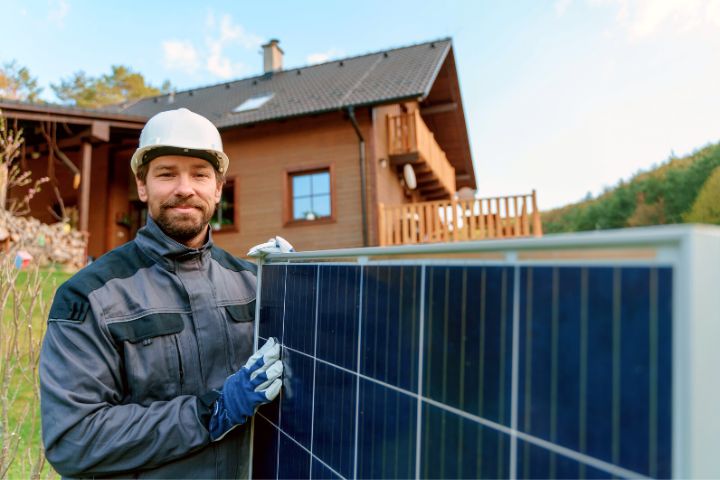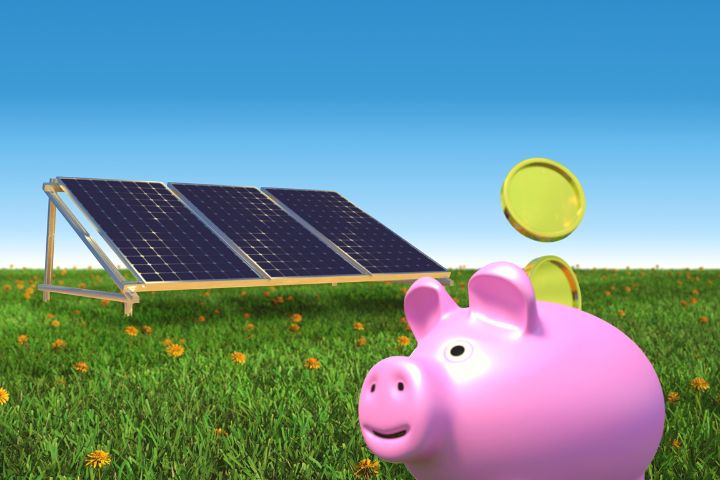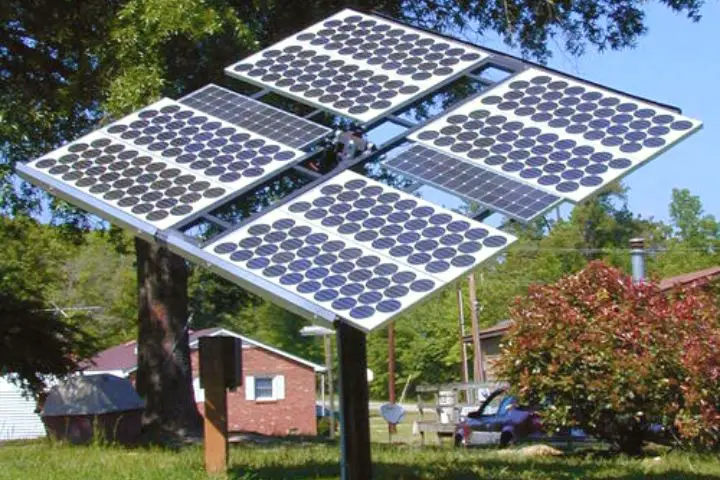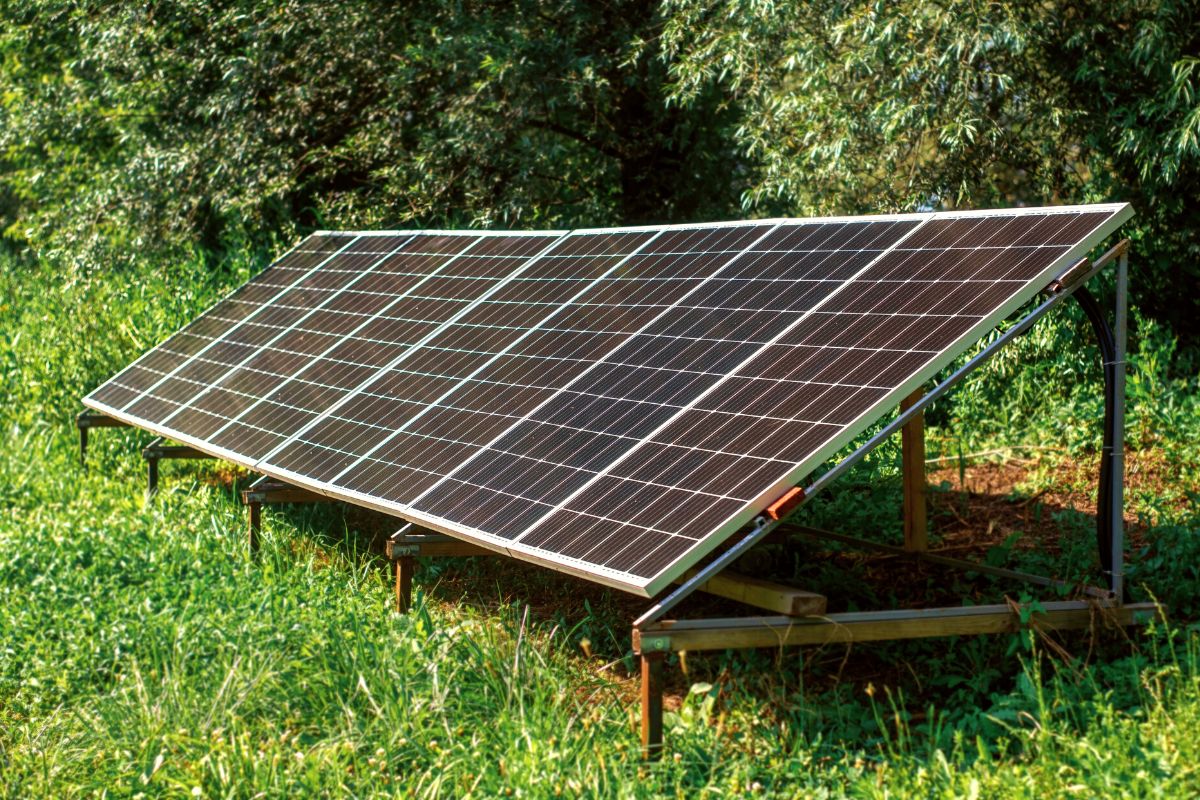Ground Mounted Solar Panels: Your Ultimate Guide to the Rooftop Alternative
If you picture a solar panel array, chances are your mind’s eye will see it sitting on a rooftop. Why is that?
The reason is simple. Almost every building has some kind of a roof, and almost every roof is just sitting on the top of the building, not doing anything in particular to cover and protect the inside. So why not just install a tool to harvest all that sun energy that’s pan-frying the surface anyway?
But roofs are not the only option. If yours isn’t big, strong or exposed enough, you can consider installing a set of ground-mounted solar panels.
Ground-mounted solar panels may be the more suitable option for your property – so let’s get into the nitty gritty.
What Is a Ground Mounted Solar Panel System?
You guessed it!
Rather than being mounted to the roof of your house, ground-mounted solar panel systems consist of the solar panels being, well, grounded to the land on your property.
This is a good option for those with limited roof space or other obstructions such as chimneys or skylights that prevent you from setting up the panels.
Benefits of Ground-Mounted Solar Panels

There’s a few other reasons to go for the ground-mounted alternative.
One of the biggest advantages is you get a ton more flexibility with how you want to place your solar panels. This is important because the placement of your panels directly impacts their efficiency in generating energy.
Generally, panels should face in the direction where they will receive the maximum amount of direct sunlight. On a rooftop, you might be limited to the direction of the slant. On adequate land, you can adjust the slant as per the sunlight. Depending on the size of your property, your ground may also provide more space than your roof. More space equals more panels equals more energy produced!
Another great advantage is that ground-mounted solar panels are also easier to install and maintain, simply because you (or anyone else) don’t have to climb up to the roof to access the set up.
The ground setup also has a safety advantage. Given that there is a significant amount of wiring required for any solar system, there is always a fire risk. With a ground-mounted system, there is much less risk of direct damage to your home in the case of a fire, as compared to if the system was set up directly on your roof.
Downsides of Ground Mounted Solar Panels
While ground-mounted solar panels are good alternatives for those with limited rooftop space, this may not apply to those who also have limited ground space. If you have less than 350 square feet of land, you likely will not have space for enough panels to fully power your home.
That being said, if you simply want to supplement your main energy source or specific parts of the home, then this is still a good option to consider.

Another consideration is the quality of your land – because not all land is created equal! If your land is not solid enough to be able to hold the mount, then it will be difficult (or possibly impossible) to install the panels.
Note that the land will have to accommodate the panels themselves (which weigh around 40 pounds each on average), plus the supporting structure. The higher it is, the more robust it will need to be to withstand the weather forces!
If you do find your ground suitable enough for ground-mounted panels, you may have yet another hoop to jump through – permits.
Unlike rooftop panels which are installed on top of an existing structure, to install a new structure on unused land may require additional permissions from your local authorities. In fact, a small town in Utah was still on the fence in 2022 about allowing ground installations because some felt, plain and simple, that the installation would be – ugly.
Finally, once you get through all the red tape and manage to set up your brand new ground-mounted solar power system, you have to make sure it’s protected.
Because the entire system, including any wiring and electric, is all on the ground, it will be beaten all the time by poor weather conditions such as snow or flooding, as well as furry friends looking for an evening snack! Luckily though, there are tips and tricks on how to protect your solar panels, whether they are nesting on your roof or down on the ground.
What About the Cost?

We’ve discussed the pros and cons of ground-mounted solar panels, but what about the numbers?
No good news in that area. The standard ground-mounted solar panels cost more than your rooftop solar panels. This is because the ground alternative setup requires additional infrastructure. When installing rooftop solar panels, you already have a roof in place on which to mount your panels. On the ground, you have to install not just the panels, but also the base on which to mount them on.
Your average cost can range anywhere from $20,000-$60,000, depending on how many panels you want to install. But here’s a rough guide on how much cash you’ll have to dish out for your solar system.
Types of Ground-Mounting
If you choose to go ahead with ground alternatives for your solar setup, the decisions don’t stop there! There are different ways to set up the mount for your panels, each with its own costs and benefits.
Standard ground mount
This is the most common and cost-effective option when it comes to ground-mounted solar panel systems.
Standard ground mounts consist of a racking table for the solar panels supported by a number of small anchors. Several types of anchors can be used, the most common ones being concrete piers, along with driven piers, helical piles and concrete ballasts. The best one for your setup will depend on the conditions of your land.
Usually the panels are installed in a fixed position, but setups with manual adjustment options are becoming more common.
Pole mount

The pole mount option takes a little bit of extra work, which is why it’s the less popular option. That being said, it may help to avoid some concerns mentioned earlier.
In this setup, a single large pole is installed into a deep hole in the ground and the panels are then installed into the poles. The panels are much higher off the ground, which means that you can maintain and utilize the land underneath.
Another advantage to this option is it lets you set up a tracking system. This means that your panels will adjust to follow the sun over the course of the day, absorbing more sunlight and thereby producing more energy. This gives you the absolute best efficiency for your system and truly makes your investment worthwhile.
But before you get too excited, you should keep in mind that this adds to the pile of expenses that’s big to begin with. A tracker is an additional investment on top of an already pricey solar setup and will require additional maintenance.
Final Thoughts
One thing is certain: choosing between ground and rooftop goes well beyond your personal preferences.
You’ll have to make your own cost-benefit analysis. Start with what you need (that is, how much energy), and stack it against what you can afford both in terms of money and real estate. If your roof is big and sturdy enough, it’s going to burn a smaller hole in your budget but will also yield less energy. But if you have a huge chunk of unused land that just sits there, go for it!






